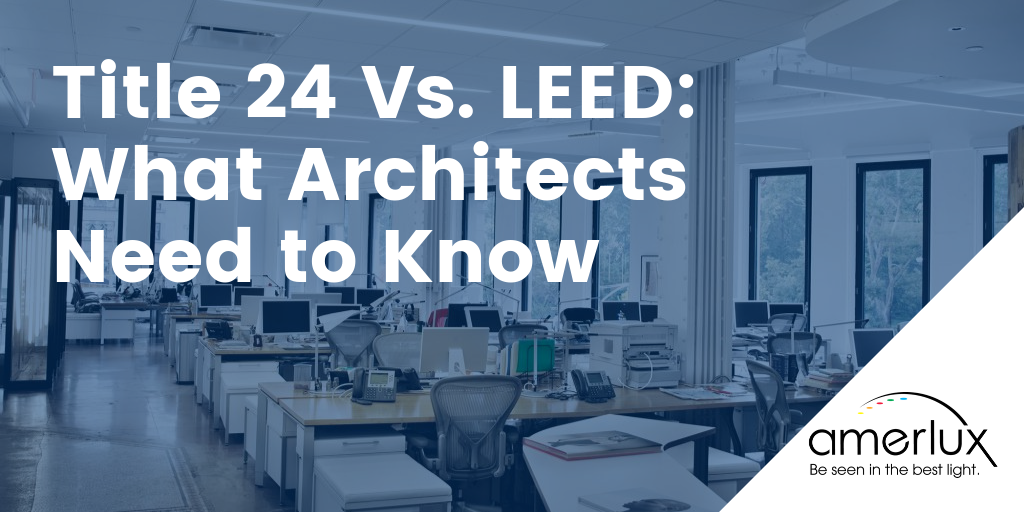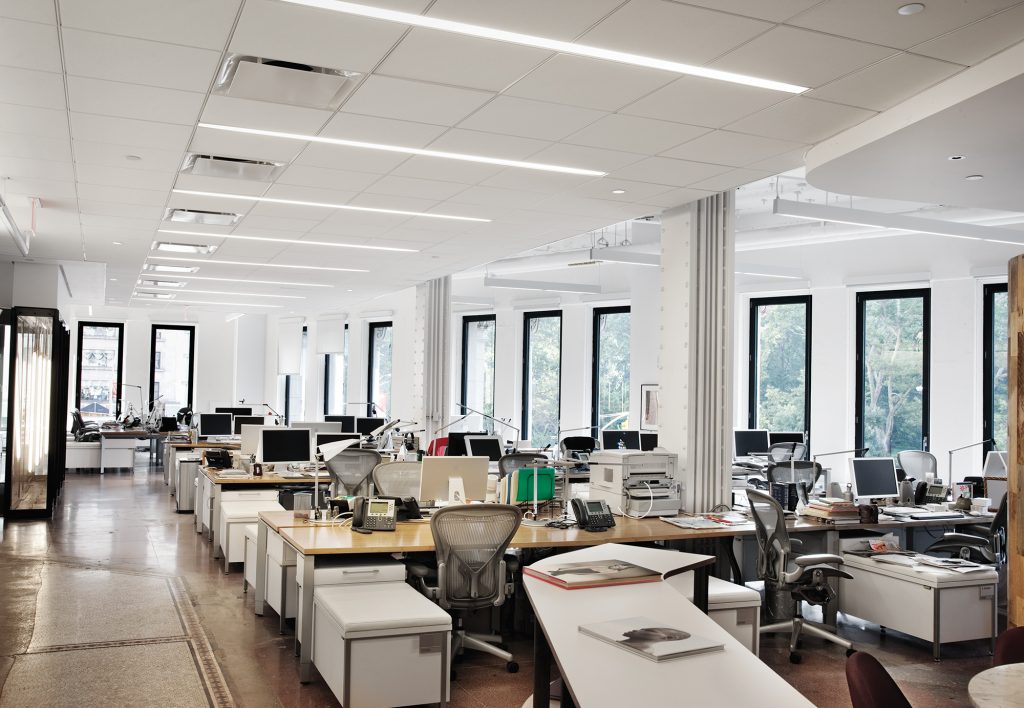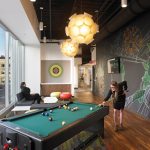Title 24 Vs. LEED: What Architects Need to Know

“Energy efficient” and “green building” are no longer just trendy buzzwords. LEED certification and key energy codes like Title 24 have not only made them a regular part of your vocabulary but also end goals for your lighting design projects.
Lighting accounts for 17% of the energy usage of a typical building and can easily cost organizations thousands of dollars each year. When your lighting solutions reduce the energy that buildings consume and lower carbon dioxide emissions, you help ensure social and economic wellbeing.
Both LEED and Title 24 can help you achieve energy efficiency and green building in new construction and existing buildings undergoing alterations or additions. LEDs are the most energy-efficient light source on the market and they can slash a facility’s electric demands by upwards of 75%.

For example, when the Queens Museum in New York City upgraded the lighting in one of their galleries, energy usage plummeted by 90%. Los Angeles trimmed its electric bills by 75% when the city switched its street lights with LEDs.
LEEDing with lighting design
LEED is a globally recognized symbol of sustainability achievement that supplies the guidelines for creating a green building. Using a points-based rating system that differs by project type, building projects can achieve Certified, Silver, Gold or Platinum status. Points are awarded based on the degree to which the requirements are met.
Lighting is a critical element in achieving LEED status. LEDs produce the longest-lasting, most energy-efficient lighting available today. They help reduce a project’s energy costs and carbon footprint in one fell swoop and give you an unprecedented level of control and design flexibility.
LEDs have more control options than any light source before them. Installing dimming controls and automatic control systems (e.g. occupancy sensors, photosensors for daylighting) reduces a building’s energy draws and can also count toward LEED points.
Using LED lighting and controls will help make the difference in the LEED certification level achieved and also contribute to a greener future.

Title 24: A leading-edge energy code
Since 1978, California has had its own energy efficiency standard —Title 24, Part 6 of the California Code of Regulations (California Building Standards Code). Title 24 governs the structural safety, accessibility and sustainability requirements for buildings in California.
New editions of the code are published every three years, with this year’s update scheduled to go into effect in 2020. Nonresidential buildings built with the 2019 standards will use about 30% percent less energy due mainly to lighting upgrades. For nonresidential buildings, the new standards include updating indoor and outdoor lighting with LED lighting technology.
When working toward Title 24 compliance for your lighting design, you will have to consider both the lighting and lighting controls in your design project. The increased emphasis on controllability and continuous dimming makes lighting controls a key product group that can support compliance. Examples of products that meet Title 24 requirements include:
- Automatic countdown timer switches that will shut off lighting after 10-30 minutes of use.
- Daylighting controls for sky-lit and side-lit zones.
- Demand responsive lighting controls that can reduce the lighting load at least 15% after receiving a utility company signal.
- Manual dimmers to reduce lighting power densities in some nonresidential settings.
- Manual on/off switch controls for areas with ceiling-height partitions.
- Occupancy/vacancy sensors to reduce energy usage in nonresidential buildings.
- Part-night outdoor controls that reduce the lighting power by up to 40% for a portion of the night.
By choosing products from lighting manufacturers whose products are control agnostic, you can achieve all of your energy efficiency and green building objectives.
Still have questions? Amerlux can help you understand the nuances of energy codes and energy control products. Contact us today and let us know how we can be of further assistance!

